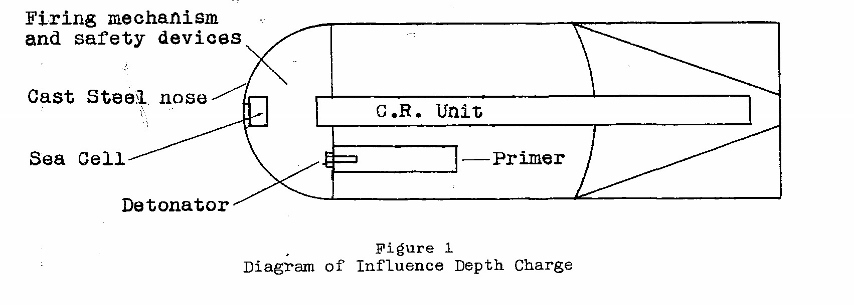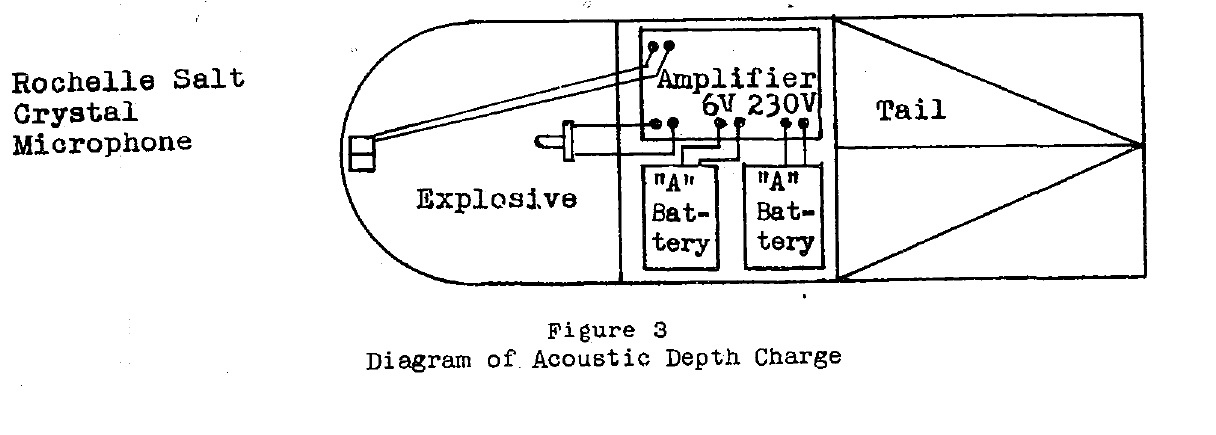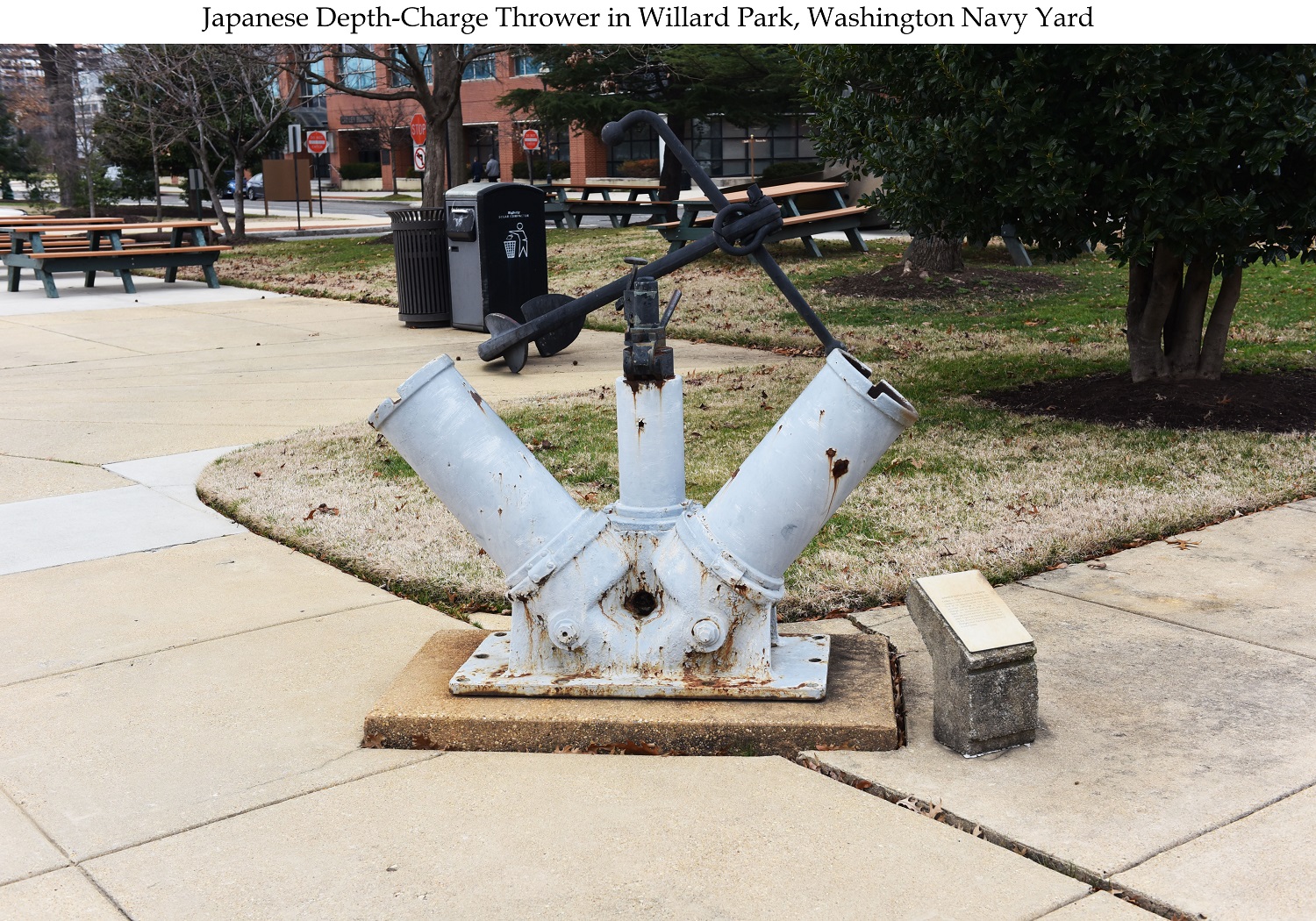One of the weakest parts of the Imperial Japanese Navy prior to World War II was that very little attention had been paid to protecting merchant ships against submarine attacks. Even after the war started, it wasn't until late 1943-early 1944 that a effort was made to increase the amount of resources devoted to ASW. By that time, it was a matter of too little, too late. No ahead-firing weapons equivalent to the Hedgehog or Squid were developed, although an ASW projectile for many naval guns and a simple mortar for merchant ships were introduced late in the war.
This low priority can be seen in the performance of the USA submarines vs. the Japanese ASW efforts. Japanese surface ships sank 17 USA submarines, aircraft sank eight and one was shared. In addition, one British submarine was sunk by aircraft and one by surface ships. By contrast, Allied Submarines sank 1,152 Japanese merchant ships of 4,861,317 gross tons, with the USA submarines accounting for about 98% of the totals. An equally impressive number of Japanese warships were sunk by submarines, with the giant aircraft carrier Shinano being the largest.
Japanese attacks were usually broken off too soon and the DC settings were too shallow.
According to "US Naval Technical Mission to Japan report S-24: Japanese Anti-Submarine Warfare:"
"The Japanese had no means of determining the depth of enemy submarines, and their depth charge patterns were designed to cover all depths within the limitations of the depth settings on their charges. Side throwers were used. Small patterns were used on doubtful contacts. Doctrine called for maximum patterns to be dropped on contacts classified definitely as submarines. Destroyers engaged in convoy work were capable of carrying ninety depth charges and on sure contacts dropped a pattern of thirty-six."
In the early part of the Pacific War first-line destroyers carried almost no DCs at all while "Kaibokan" escorts carried 12 to 18. By the end of the war, most destroyers carried 30 DCs and escort vessels (kaibokan) carried about 120 including those stored below deck. Destroyers usually had only stern racks but escort vessels had six or eight depth charge throwers (DCT) and some Y guns.
| Date Of Design | 1928 |
|---|---|
| Date In Service | about 1930 |
| Total Weight | N/A |
| Explosive Charge | 220 lbs. (100 kg) picric acid |
| Sink Rate / Terminal Velocity | N/A |
| Settings | 82 feet or 148 feet (25 or 45 m) |
Used hydrostatic pistol. Obsolete and probably not in service by 1941.
| Date Of Design | 1931 |
|---|---|
| Date In Service | about 1935 |
| Total Weight | N/A |
| Explosive Charge | 220 lbs. (100 kg) Type 88 charge |
| Sink Rate / Terminal Velocity | N/A |
| Settings | 82 feet or 164 feet (25 or 50 m) |
Used hydrostatic pistol. Obsolete and probably not in service by 1941.
| Date Of Design | 1935 |
|---|---|
| Date In Service | 1940 |
| Total Weight | 325 lbs. (160 kg) |
| Explosive Charge | Type 95: 220 lbs. (100 kg) Type 88 charge
Type 95 Model 1 Mod 1: 324 lbs. (147 kg) Type 97 or 98 charge Type 95 Model 1 Mod 2: 243 lbs. (110 kg) Type 1 charge |
| Sink Rate / Terminal Velocity | 6 fps (1.9 mps) |
| Settings | Type 95: 98 feet (30 m) with or without parachute and 197 feet (60 m)
Type 95 Model 1 Mods 1 and 2: Added 295 and 394 foot (90 and 120 m) settings |
This was the standard DC for the first half of World War II. Slow ships dropped it with a parachute which allowed them to escape the danger area. Unfortunately, this also allowed time for the submarine to escape. Parachute DC used only the shallower setting. Depth setting was controlled by varying the size of a water inlet. When the proper amount of water had entered, the charge would fire.
| Date Of Design | 1942 |
|---|---|
| Date In Service | 1943 |
| Total Weight | N/A |
| Explosive Charge | Mod 0: 231 lbs. (105 kg) Type 88
Mod 1: 357 lbs. (162 kg) Type 97 or 98 Mod 2: 243 lbs. (110 kg) Type 1 or 4 |
| Sink Rate / Terminal Velocity | 9.9 fps (3.0 mps) |
| Settings | Type 3 Model 1 DC Pistol: 98, 197, 295, 394 and 476 feet (30, 60, 90
120 and 145 m)
Type 3 Model 2 DC pistol: 131, 262, 394, 525 and 656 feet (40, 80, 120, 160 and 200 m) |
Almost a direct copy of British designs. Same sort of pistol as on the Type 95. The Type 3 Model 2 pistol was a late-war addition and was not in general use at the time of the surrender. No doctrine had been developed for using the deeper settings.
| Date Of Design | 1944 |
|---|---|
| Date In Service | Not in service |
| Total Weight | 582 lbs. (264 kg) |
| Explosive Charge | 220 lbs. (100 kg) Type 88 or Type 1 |
| Sink Rate / Terminal Velocity | 23 fps (7 mps) |
| Settings | Hydrostatic switches activated at 65 feet (20 m) and armed at 82 feet (25 m). If no contact was made, the DC self-destructed at 656 feet (200 m). |
| Detection Range | 26 feet (8 m) |
Still under development at the time of the surrender. The cast steel nose was one of the major problems found as only two of the ten produced experimentally were found to be acceptable, the remainder being too porous. No provision was made in the design to protect against shock. Trials had just started on an aircraft model when the war ended.
| Date Of Design | 1945 |
|---|---|
| Date In Service | Not in service |
| Total Weight | 550 lbs. (250 kg) |
| Explosive Charge | N/A |
| Sink Rate / Terminal Velocity | N/A |
| Settings | N/A |
Still in the early research stage at the time of the surrender. None are believed to have been made even as prototypes. Designed for laying from ships but the need for aircraft laying was understood. The sensor was made from Rochelle Salt Crystal Microphone and was to fire when the sound rate of change reached one to two dBs (decibels per second).
Designations and capabilities are not available at this time. Generally similar to USA versions.
There were some broadside DCT and some Y guns but no ahead-throwing weapons such as Hedgehog. Possibly the most common was the Model 1934 which was first introduced in September 1934 and quickly became the standard DCT on Japanese ships. Known as the "Type Y launching device, depth charge twin launching device," this was a twin-arm Y launcher but could be used in single-side mode. Total weight of 1,500 lbs. (680 kg). When used with the Type 95 DC, range was 245 feet (75 m) for simultaneous firing and 345 feet (105 m) for single firing. Time of flight was 4.5 seconds for simultaneous firing and 5 seconds for single firing.
The Japanese developed anti-submarine projectiles for most naval guns between 3" (7.6 cm) and 6" (15.2 cm). These were Common Type 0 (1940) with a cylindrical head over the nose for the 6" (15.2 cm) and 5.5" (14 cm) guns and a flat-headed shell for the 5" (12.7 cm), 4.7" (12 cm) and 3" (7.6 cm) guns. These were introduced in 1943.
The larger guns had a muzzle velocity of about 820 fps (250 mps) and a range of 4,370-4,700 yards (4,000-4,300 m) at elevations of 40 degrees. The minimum range was 820-875 yards (750-800 m). The 3" (7.6 cm) projectile values were 3,500 yards (3,200 m) maximum and 765 yards (700 m) minimum.
A 15 cm (5.9") ASW mortar was developed for transports and merchant ships. This was in a cradle mounting allowing 360 degree traverse and had recoil and runout cylinders. The projectile weighed about 60 lbs. (27 kg) and could range out to a maximum of 4,500 yards (4,100 m).
The Navy 81 mm mortar was also carried by many escorts, firing standard projectiles.
Finally, a 15 cm (5.9") rocket propelled DC with a range of 3,280 yards (3,000 meters) was developed in April 1945 but this saw no active service.
"Naval Weapons of World War Two" by John Campbell
"US Naval Weapons" and "The Naval Institute Guide to World Naval Weapon Systems 1991/92" both by Norman Friedman
"Japanese 'Kaibokan' Escorts" article by Hans Lengerer in "Warships Volume VIII"
"US Warships of World War II" by Paul H. Silverstone
---
US Naval Technical Mission to Japan report S-24: Japanese Anti-Submarine Warfare
US Naval Technical Mission to Japan report 0-08: Japanese Depth Charges
30 July 2006 - Benchmark
30 December 2017 - Converted to HTML 5 format, added data on Type 4 and Acoustic DC
05 February 2023 - Added photograph of Japanese 'Y' gun and links to "Short Guns"



